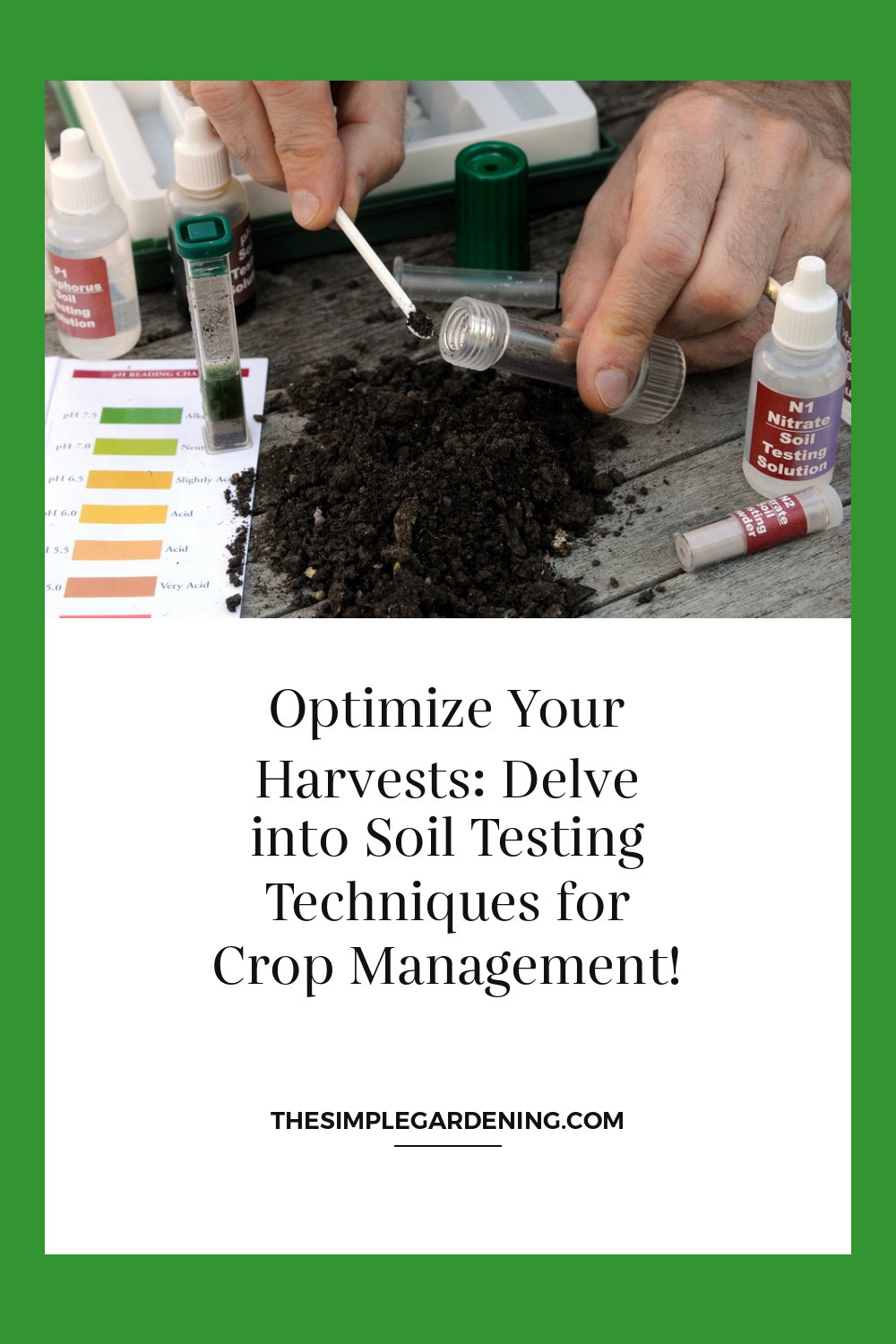Soil health is the cornerstone of successful gardening and agriculture. Understanding the intricate balance of pH and nutrient levels in soil is crucial for ensuring optimal plant growth and productivity.
Importance of Soil Testing in Crop Management
Soil testing is akin to a health check-up for your garden or farm. It provides invaluable insights into the current state of your soil, helping you make informed decisions about fertilization, soil amendments, and crop selection. By regularly testing your soil, you can prevent nutrient deficiencies, optimize fertilizer use, and promote sustainable land management practices.
Understanding Soil pH and Nutrient Levels
Soil pH refers to the acidity or alkalinity of the soil, measured on a scale from 0 to 14. A pH value of 7 is considered neutral, below 7 is acidic, and above 7 is alkaline. Different plants thrive in different pH ranges, so understanding and managing soil pH is essential for successful crop production.
II. Soil pH Basics
Definition of pH
pH, or “potential of Hydrogen,” measures the concentration of hydrogen ions in the soil. It is a crucial factor that influences nutrient availability, microbial activity, and overall soil health.
Ideal pH Ranges for Different Crops
Different crops have varying pH preferences. Here’s a general guideline for optimal pH ranges:
| Crop | Optimal pH Range |
|---|---|
| Blueberries | 4.5 – 5.5 |
| Tomatoes | 6.0 – 6.8 |
| Potatoes | 5.0 – 6.0 |
| Spinach | 6.0 – 7.0 |
Maintaining soil pH within these ranges ensures that plants can efficiently absorb nutrients from the soil, leading to healthier and more productive crops.
III. Methods for Testing Soil pH
Accurately determining soil pH is the first step towards optimizing soil fertility and plant health. Fortunately, there are several methods available for testing soil pH.
Using pH Testing Kits
pH testing kits are affordable and easy to use, making them a popular choice for home gardeners. These kits typically include pH testing probes or strips that change color based on the soil’s acidity or alkalinity.
| Pros | Cons |
|---|---|
| Easy to use and affordable | May lack precision compared to laboratory testing |
| Suitable for quick on-site testing | Limited to surface soil samples |
| Widely available in garden centers | Requires periodic calibration |
Laboratory Soil Testing Services
For more accurate and comprehensive soil analysis, professional laboratory testing is recommended. Soil samples are sent to accredited laboratories where they undergo rigorous analysis for pH, nutrient levels, and other soil properties.
| Pros | Cons |
|---|---|
| Provides detailed and accurate results | Longer turnaround time |
| Offers comprehensive soil analysis | Higher cost compared to DIY testing kits |
| Ideal for large-scale agricultural operations | Requires proper soil sample collection and handling |

Source Image: www.gardenersworld.com
Interpreting Soil pH Results
Understanding the implications of soil pH results is crucial for effective soil management and crop production.
Effects of pH on Nutrient Availability
Soil pH directly influences the availability of essential nutrients to plants. For example, acidic soils (pH below 7) tend to have higher levels of available aluminum and manganese but lower levels of calcium, magnesium, and phosphorus. In contrast, alkaline soils (pH above 7) may experience deficiencies in micronutrients like iron and zinc.
Adjusting pH for Optimal Crop Growth
To optimize crop growth and yield, it’s essential to adjust soil pH to suit the specific needs of the plants you’re growing. This can be achieved through various methods, such as:
- Liming: Adding agricultural lime to acidic soils to raise pH levels and reduce acidity.
- Acidification: Using elemental sulfur or acidic fertilizers to lower pH in alkaline soils.
- Organic Matter Amendments: Incorporating organic materials like compost or manure can help buffer soil pH and improve nutrient availability.
V. Understanding Soil Nutrients
Essential Macronutrients and Micronutrients
Plants require a diverse array of nutrients for healthy growth and development. These nutrients can be broadly categorized into macronutrients, which are needed in large quantities, and micronutrients, which are required in smaller amounts but are equally essential for plant health.
Functions of Nutrients in Plant Growth
Each nutrient plays a unique role in various physiological processes within the plant. Here’s a brief overview of the primary functions of essential nutrients:
| Nutrient | Function |
|---|---|
| Nitrogen (N) | Essential for leafy growth, protein synthesis, and overall plant vigor. |
| Phosphorus (P) | Crucial for root development, flowering, and fruiting. |
| Potassium (K) | Aids in disease resistance, water uptake, and overall plant metabolism. |
| Calcium (Ca) | Important for cell wall formation and structural integrity. |
| Magnesium (Mg) | Essential component of chlorophyll, involved in photosynthesis. |
| Iron (Fe) | Necessary for chlorophyll synthesis and electron transport. |
| Zinc (Zn) | Acts as a cofactor for enzymes involved in carbohydrate metabolism and hormone regulation. |
| Manganese (Mn) | Participates in photosynthesis, nitrogen metabolism, and enzyme activation. |
| Copper (Cu) | Facilitates electron transfer in redox reactions and lignin formation. |
| Boron (B) | Essential for cell wall synthesis, pollen germination, and seed development. |
| Molybdenum (Mo) | Required for nitrogen fixation and enzyme activation. |

Source Image: thehomesteadingrd.com
VI. Soil Nutrient Testing Methods
Accurate assessment of soil nutrient levels is vital for maintaining optimal fertility and ensuring healthy plant growth. Various methods are available for testing soil nutrients, ranging from DIY soil testing kits to professional laboratory analysis.
Soil Testing Kits for Nutrient Analysis
Soil testing kits are convenient tools that allow gardeners to assess basic soil nutrient levels at home. These kits typically include test strips, reagents, or colorimetric assays for measuring nutrient concentrations.
| Pros | Cons |
|---|---|
| Affordable and easy to use | Limited to basic nutrient analysis |
| Provides quick results on-site | May lack precision compared to laboratory testing |
| Suitable for routine monitoring | Requires proper calibration and technique |
Sending Soil Samples to Laboratories
For more comprehensive soil analysis, professional laboratory testing is recommended. Soil samples collected from different areas of the garden or field are sent to accredited laboratories for analysis using advanced techniques.
| Pros | Cons |
|---|---|
| Provides detailed and accurate results | Longer turnaround time |
| Offers comprehensive soil analysis | Higher cost compared to DIY testing kits |
| Ideal for large-scale agricultural operations | Requires proper soil sample collection and handling |
VII. Interpreting Soil Nutrient Test Results
Once you receive the results from your soil nutrient tests, it’s essential to interpret them correctly to make informed decisions about soil management and fertilization practices.
Identifying Nutrient Deficiencies and Excesses
Soil nutrient test results will indicate the levels of various nutrients present in your soil. By comparing these levels to optimal ranges for your crops, you can identify any deficiencies or excesses that may be impacting plant growth.
Making Recommendations for Soil Amendments
Based on the nutrient deficiencies or excesses identified in the soil test results, you can develop a customized soil amendment plan to address these issues. This may involve applying fertilizers, organic amendments, or pH-adjusting agents to correct nutrient imbalances and improve soil fertility.
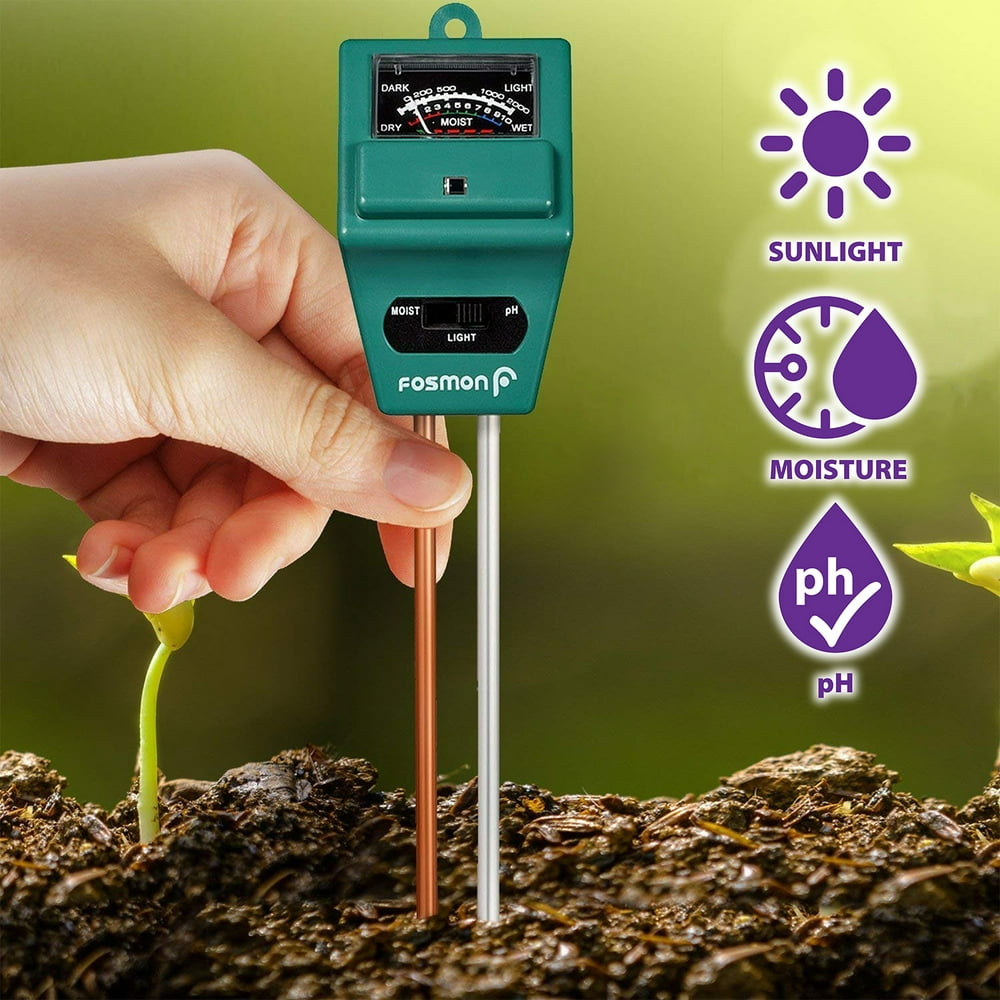
Source Image: www.walmart.com
VIII. Adjusting Soil Nutrient Levels
Maintaining balanced soil nutrient levels is essential for promoting healthy plant growth and maximizing crop yields. There are various strategies for adjusting soil nutrient levels to meet the specific needs of your plants.
Organic vs. Synthetic Fertilizers
Organic fertilizers, such as compost, manure, and organic amendments, provide a slow-release source of nutrients and improve soil structure and microbial activity. They are derived from natural sources and are environmentally friendly. However, organic fertilizers may take longer to break down and release nutrients compared to synthetic fertilizers.
On the other hand, synthetic fertilizers are manufactured chemical products that provide readily available nutrients to plants. They are fast-acting and allow for precise control over nutrient levels. However, over-reliance on synthetic fertilizers can lead to soil degradation, nutrient imbalances, and environmental pollution.
Applying Amendments to Correct Nutrient Imbalances
Once you’ve identified nutrient deficiencies or excesses in your soil, you can apply appropriate soil amendments to address these issues. Here are some common soil amendments used to adjust nutrient levels:
| Soil Amendment | Nutrient Benefits | Application Method |
|---|---|---|
| Lime | Raises soil pH, adds calcium and magnesium | Broadcast or incorporated into the soil |
| Sulfur | Lowers soil pH, reduces alkalinity | Broadcast or incorporated into the soil |
| Compost | Provides organic matter and nutrients | Incorporated into the soil or applied as mulch |
| Manure | Adds organic matter and nutrients | Incorporated into the soil or applied as mulch |
| Bone Meal | Rich in phosphorus for root development | Incorporated into the soil |
| Fish Emulsion | Provides nitrogen and micronutrients | Applied as a foliar spray or soil drench |
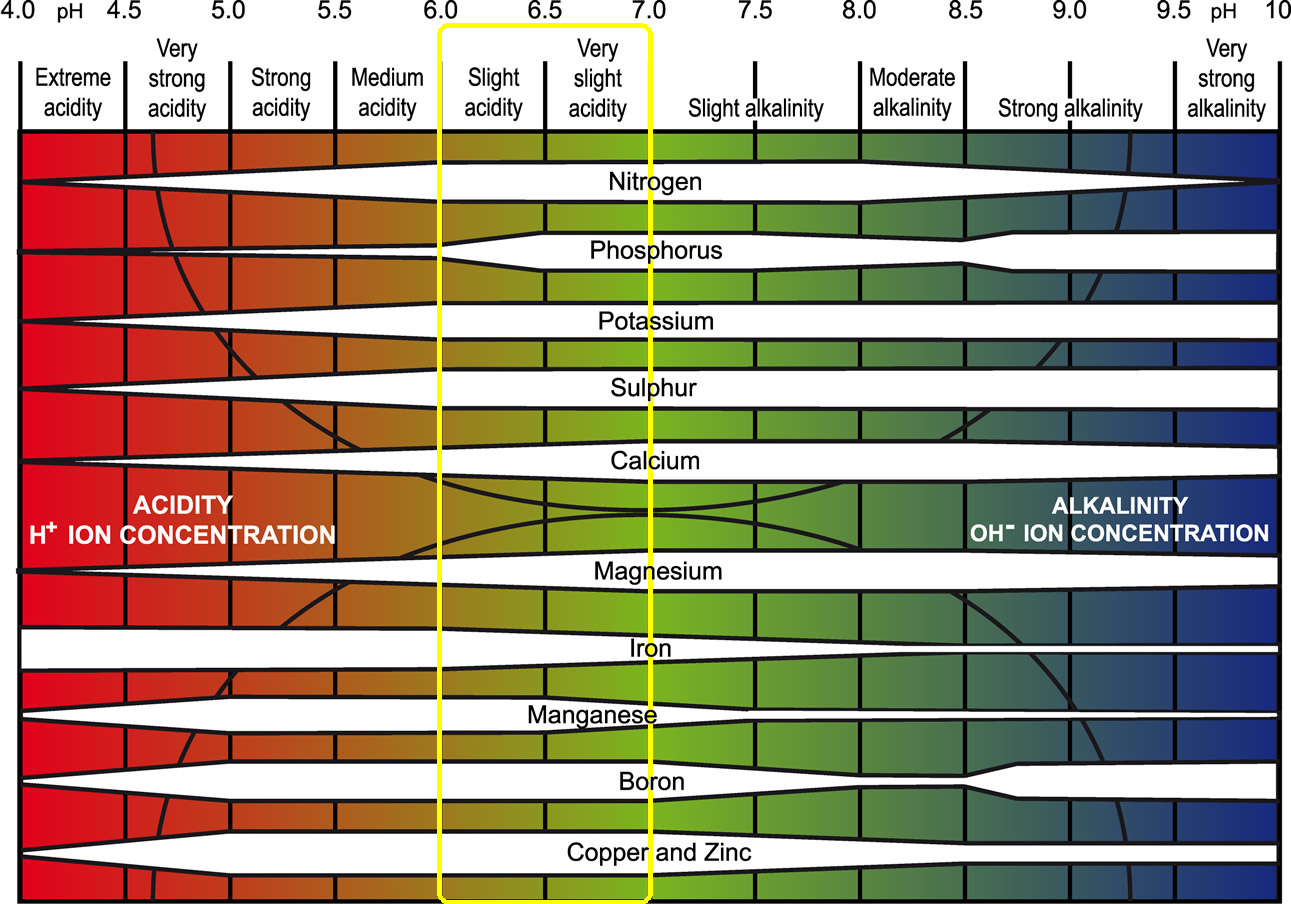
Source Image: www.arborrangers.com
Soil pH and Nutrient Testing
IX. Importance of Soil Health in Crop Production
Healthy soil is the foundation of sustainable agriculture and plays a critical role in crop production. By focusing on soil health, farmers and gardeners can enhance productivity, reduce environmental impacts, and build resilient agricultural systems.
Relationship Between Soil Health and Plant Nutrition
Soil health directly impacts plant nutrition and overall crop performance. Healthy soils are teeming with beneficial microbes, organic matter, and diverse nutrient cycles that support vigorous plant growth and nutrient uptake. Conversely, degraded soils with poor structure, low organic matter, and imbalanced nutrient levels can inhibit plant growth and lead to reduced yields.
Sustainable Soil Management Practices
Implementing sustainable soil management practices is essential for preserving soil health and fertility for future generations. Some key strategies for promoting soil health include:
- Crop Rotation: Rotating crops helps break pest and disease cycles, improves soil structure, and replenishes nutrients.
- Cover Cropping: Planting cover crops helps prevent soil erosion, suppress weeds, and add organic matter to the soil.
- Reduced Tillage: Minimizing tillage reduces soil disturbance, preserves soil structure, and promotes soil organic matter retention.
- Integrated Nutrient Management: Balancing organic and inorganic nutrient sources helps maintain soil fertility while minimizing environmental impacts.
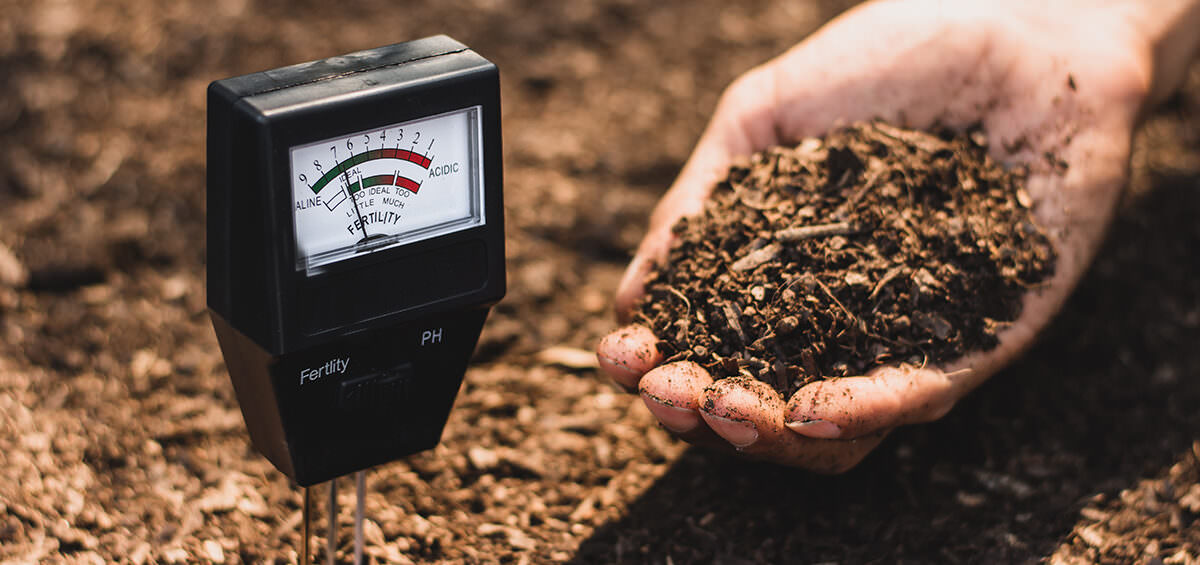
Source Image: www.agrivi.com
X. Soil Testing for Specific Crops
Different crops have unique nutrient requirements and soil preferences. Tailoring soil testing methods to suit the specific needs of your crops is essential for optimizing soil fertility and promoting healthy plant growth.
Tailoring Soil Testing Methods to Crop Needs
When testing soil for specific crops, consider factors such as the crop’s pH preferences, nutrient requirements, and soil texture. Conducting targeted soil tests allows you to assess the suitability of your soil for growing particular crops and identify any adjustments needed to meet their nutritional needs.
Understanding Crop Nutrient Requirements
Each crop has specific nutrient requirements at different growth stages. By understanding these requirements, you can adjust soil nutrient levels accordingly to support optimal plant growth and yield. Consult crop-specific nutrient management guidelines or extension resources to determine the ideal nutrient levels for your crops.
XI. Sampling Techniques for Accurate Soil Testing
Accurate soil sampling is essential for obtaining reliable soil test results. Proper sampling techniques ensure that the soil samples collected are representative of the entire area being tested and provide accurate insights into soil fertility and nutrient levels.
Collecting Soil Samples from Various Depths
When collecting soil samples, it’s crucial to sample from multiple depths to capture variations in soil properties and nutrient distribution. For most crops, sampling to a depth of 6 to 8 inches is recommended to capture the root zone where nutrient uptake occurs. However, for deep-rooted crops like trees or perennial plants, sampling to greater depths may be necessary.
Ensuring Representative Samples for Analysis
To obtain representative soil samples, follow these guidelines:
- Divide your garden or field into uniform management zones based on factors such as soil type, topography, and historical management practices.
- Collect multiple subsamples from each zone, avoiding areas with obvious anomalies like fertilizer bands or areas with poor drainage.
- Mix the subsamples thoroughly to create a composite sample for analysis, ensuring that each composite sample represents the entire zone accurately.
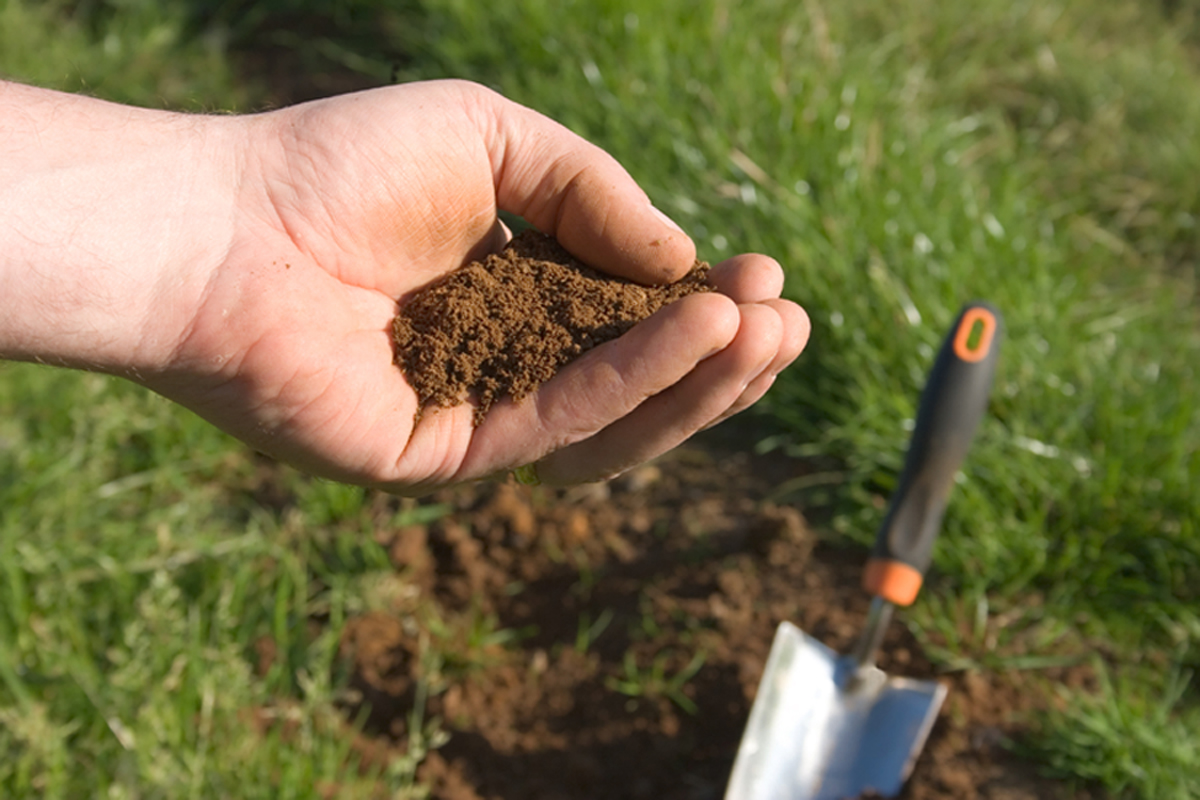
Source Image: www.lawnstarter.com
XII. Timing of Soil Testing
The timing of soil testing plays a crucial role in determining the accuracy of soil test results and the effectiveness of soil management practices. Conducting soil tests at the right time ensures that you can make timely adjustments to soil fertility and nutrient levels to support optimal crop growth.
Best Times to Test Soil for Different Crops
The timing of soil testing varies depending on factors such as crop type, growing season, and management practices. As a general guideline:
- Pre-Planting: Conduct soil tests before planting to assess baseline soil fertility and nutrient levels. This allows you to make pre-plant fertilizer applications and soil amendments as needed.
- Mid-Season: Soil tests can also be conducted during the growing season to monitor changes in soil fertility and nutrient availability. Mid-season soil tests can help identify nutrient deficiencies or imbalances that may require corrective action.
- Post-Harvest: After harvest, soil tests can be used to evaluate the effectiveness of nutrient management practices and plan for future soil amendments or cover cropping.
Incorporating Soil Testing into Crop Management Plans
Integrating soil testing into your crop management plans ensures that soil fertility and nutrient levels are regularly monitored and adjusted to meet the needs of your crops. By following a systematic soil testing schedule, you can optimize nutrient management practices, improve crop yields, and maintain soil health over time.
:max_bytes(150000):strip_icc()/easy-diy-soil-tests-2539856_FINAL-9676c2d2646d401da7e195e4a52b73fa.jpg)
Source Image: 160east22.com
Soil pH and Nutrient Testing
XIII. Monitoring Soil Health Over Time
Regular soil testing and monitoring are essential for long-term soil health and crop management. By tracking changes in soil pH and nutrient levels over time, you can identify trends, make informed management decisions, and maintain optimal soil fertility for sustained crop productivity.
Regular Soil Testing for Long-Term Crop Management
Incorporating regular soil testing into your crop management practices allows you to track changes in soil fertility and nutrient levels over time. By testing soil at consistent intervals (e.g., annually or biennially), you can monitor soil health trends, identify nutrient deficiencies or imbalances, and adjust management practices accordingly.
Tracking Changes in Soil pH and Nutrient Levels
Monitoring changes in soil pH and nutrient levels provides valuable insights into the effectiveness of soil management practices and the impact of crop rotations, cover cropping, and fertilizer applications. By comparing current soil test results to historical data, you can assess the success of soil improvement efforts and make adjustments as needed.
XIV. Advanced Soil Testing Technologies
Advancements in soil testing technologies offer new opportunities for precision agriculture and enhanced soil management practices. From soil sensors to precision mapping systems, these technologies provide real-time data and insights to optimize nutrient management, improve crop yields, and minimize environmental impacts.
Soil Sensors and Monitoring Systems
Soil sensors are devices that measure various soil parameters, such as moisture content, temperature, and nutrient levels, in real time. These sensors can be deployed in the field to monitor soil conditions continuously and provide data for precision irrigation, fertilization, and crop management decisions.
Precision Agriculture Techniques for Soil Management
Precision agriculture utilizes advanced technologies, such as GPS mapping, remote sensing, and data analytics, to optimize farming practices and resource use efficiency. By integrating soil testing data with other agronomic data layers, farmers can create site-specific management plans tailored to the unique needs of each field, improving productivity and sustainability.

Source Image: www.walmart.com
XV. Educating Farmers and Gardeners on Soil Testing
Promoting awareness of the importance of soil testing and providing resources for accessing soil testing services are critical steps in improving soil management practices and ensuring sustainable agriculture. By educating farmers and gardeners on the benefits of soil testing, we can empower them to make informed decisions about soil fertility, nutrient management, and crop production.
Promoting Awareness of the Importance of Soil Testing
Educational outreach programs, workshops, and extension services play a vital role in raising awareness about the importance of soil testing and its impact on crop productivity and environmental sustainability. By highlighting the benefits of soil testing, such as improved nutrient management, reduced fertilizer inputs, and enhanced soil health, we can encourage more farmers and gardeners to incorporate soil testing into their management practices.
Providing Resources for Accessing Soil Testing Services
Ensuring access to affordable and reliable soil testing services is essential for promoting widespread adoption of soil testing practices. Collaborating with local agricultural agencies, universities, and soil testing laboratories can help expand access to soil testing services and provide farmers and gardeners with the information and resources they need to make informed soil management decisions.
By mastering the art of soil pH and nutrient testing, farmers and gardeners can unlock the full potential of their land, cultivate healthy and productive crops, and contribute to a sustainable future for agriculture.

